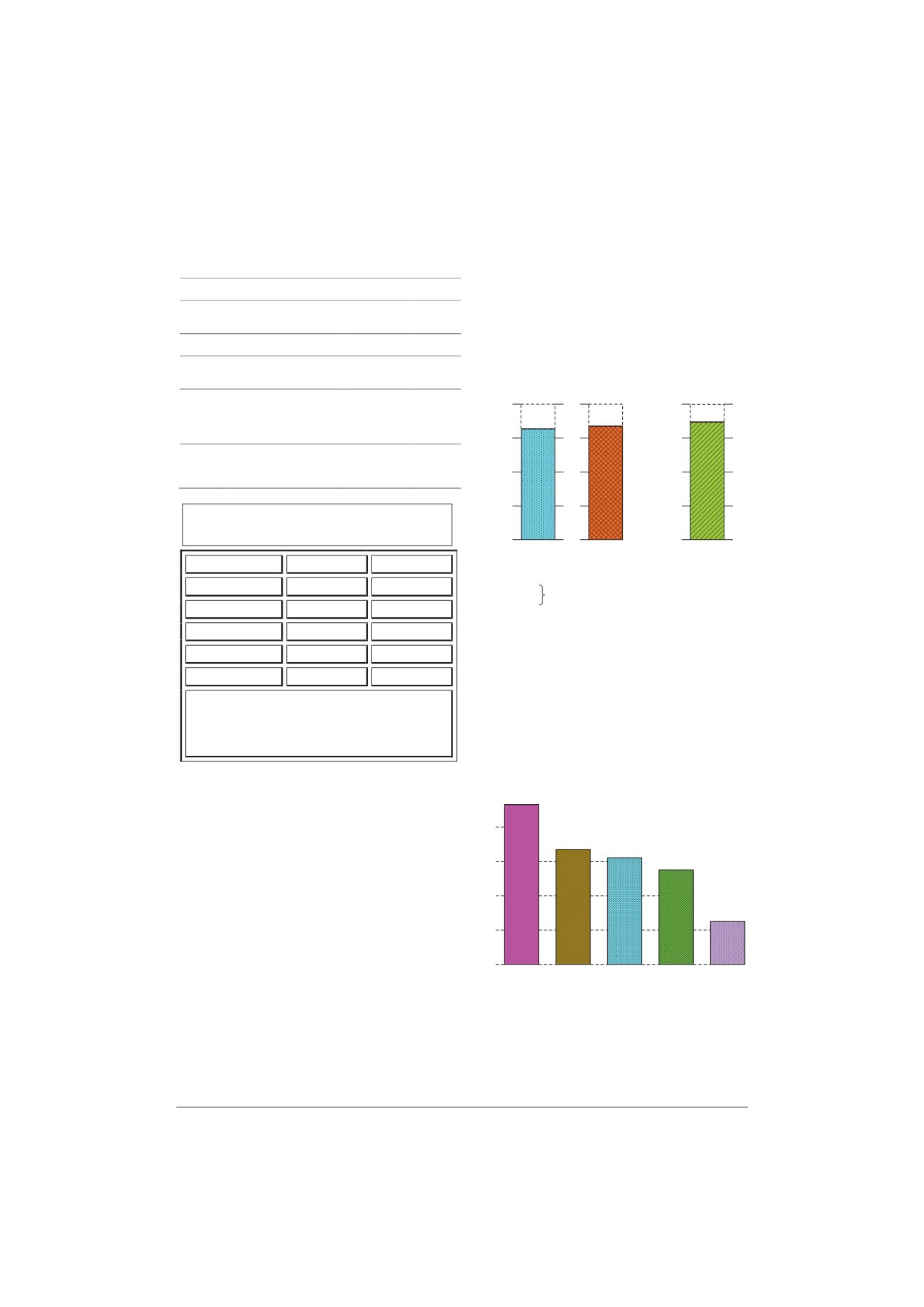
2011 International Conference on Alternative Energy in Developing Countries and Emerging Economies
- 188 -
TABLE
I
V
EHICLE
F
UEL
A
TTRIBUTES AND
L
EVELS
U
SED IN THE
C
HOICE
E
XPERIMENT
Attribute
(
UNIT
)
Definition
Levels
Expected
sign
Fuel Type
(D
UMMY
)
The number of different kinds
of fuel; fossil fuel (diesel) and
alternative fuel (biodiesel)
diesel, biodiesel
-,+
Fuel Cost
(B
AHT
)
Price for using fuel
20,23,25,30,36,40
-
Operation
Costs
(%)
Cost increase with vehicle
use, except fuel costs such as
maintenance and repair costs
-10,-5,-2,0
-
Cetane
Number
(%)
Expression of diesel fuel
quality, such as quick starting
engines, longer engine
durability, reduced noise and
vibration
0,7,12,15
+
Pollution
Emissions
(%)
Emissions from fuel of
adverse health effects
including CO, NO
2
,
SO
2
,PM
10
and O
3
-64, -50, -37,-22,-
10,0
-
Category
Fuel A
Fuel B
Fuel Type:
Diesel
Biodiesel
Fuel Cost (Baht/litre) :
20.00
40.00
Operation Costs:
Like present
10% less
Cetane Number:
Like present
15% better
Pollution Emissions:
Like present
64% less
I would buy:
Strongly Slightly A and B are Slightly Strongly
prefer A prefer A about equal prefer B prefer B
Fig. 1. Example of paired comparison question.
The survey was carried out in Bangkok after the initial
design and pre-test stages. The final questionnaire
comprised three parts. A general attitudinal question
about biodiesel fuel in Bangkok, Thailand was introduced
in the first part. The second part contained the PC
exercise. The final part was to provide information on a
variety of socio-economic characteristics such as age,
gender, education and income levels. The survey was
based on face-to-face interviews, for a sample of 650
sample populations included both Bangkok residents and
people who worked in Bangkok by multi-stage sampling
consists of stratified and cluster sampling.
Around 98%
of all interviews were completed providing sufficiently
complete responses to permit empirical analysis.
III. R
ESULT AND
D
ISCUSSION
T
he Bangkok’s residents were asked to rate the level
of their concerns towards air pollution, their views on the
relative seriousness of health impacts and to reveal their
attitudes towards regulations controlling air pollution.
The main finding from the questionnaire showed that
the Bangkok survey residents were very concerned about
air pollution problems (A) and they thought that very
high air pollution would have serious adverse impacts on
health (B). Moreover, then most people also slightly
agreed with the control policy of air pollution produced
by vehicles (C) (Fig. 2). All three opinions (A, B and C)
showed significant differences between these features by
testing with the goodness of fit test at a level of
significance 0.05.
-2
-1
0
1
2
Not at all
concerned
A little
concerned
Somewhat
concerned
Very
concerned
Extremely
concerned
A
C
B
1.33
(0.682)
1.38
(0.688)
1.49
(0.696)
Strongly
agree
Slightly
agree
Strongly
disagree
Slightly
disagree
Neither
agree nor
disagree
2
1
0
-1
-2
Fig. 2. Opinions on air pollution in Bangkok.
N
o
te:
1.33 Mean
(0.682) (Std. Deviation)
Significant at 5% level
A = Air pollution concern
B = Health impacts of air pollution concern
C = Regulation for controlling air pollution from vehicle
Figure 2 and 3 on a scale ranging from -2= not at all concerned to 2 =
extremely concerned.
Somewhat surprisingly, air problem was the highest
concern (4.68) in all environmental problems by the
sample ranking in the Bangkok area. Next was solid
waste (3.33) and water problems (3.05), which came
second and third, respectively. The least concern was the
problem about soil (1.24) (Fig.3).
4.68
3.33
3.05
2.70
1.24
Air
Solid Waste
Water
Soil
Noise
1
0
2
3
4
Fig. 3. The ranking of environmental problems in Bangkok.
Note: 4.68, 3.33, 3.05, 2.70 and 1.24 were the mean rankings in the
Friedman’s test. This was significant at the 5% level.
Suppose that you were considering purchasing a new vehicle fuel,
which fuel would you prefer
(choose a preferred one).


